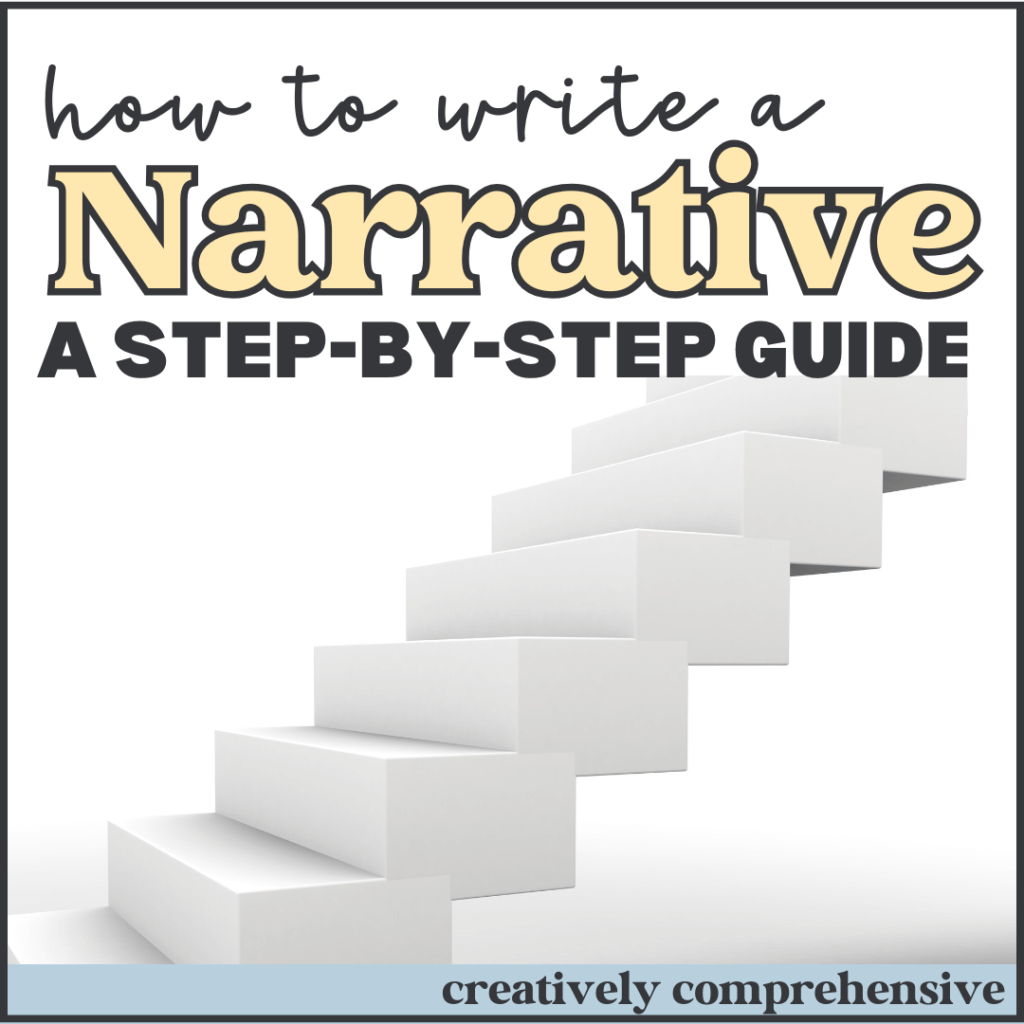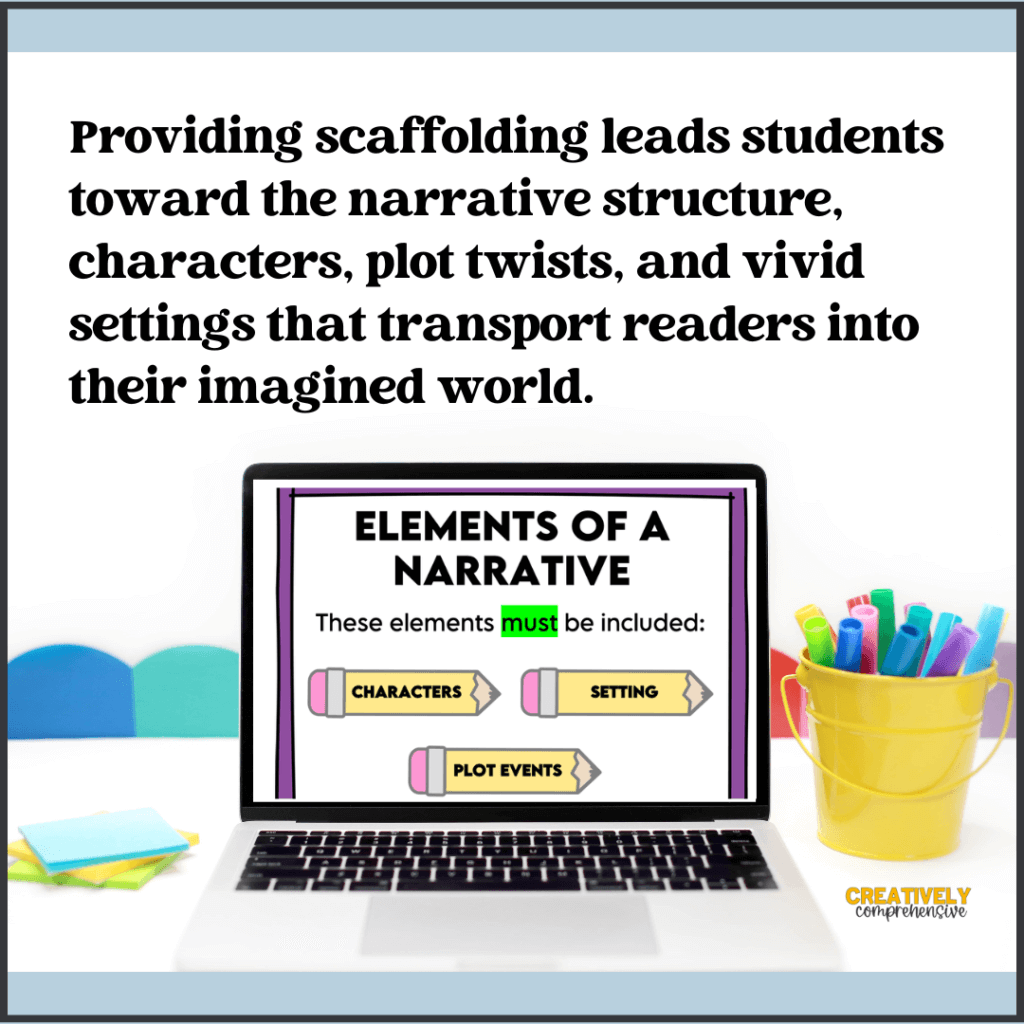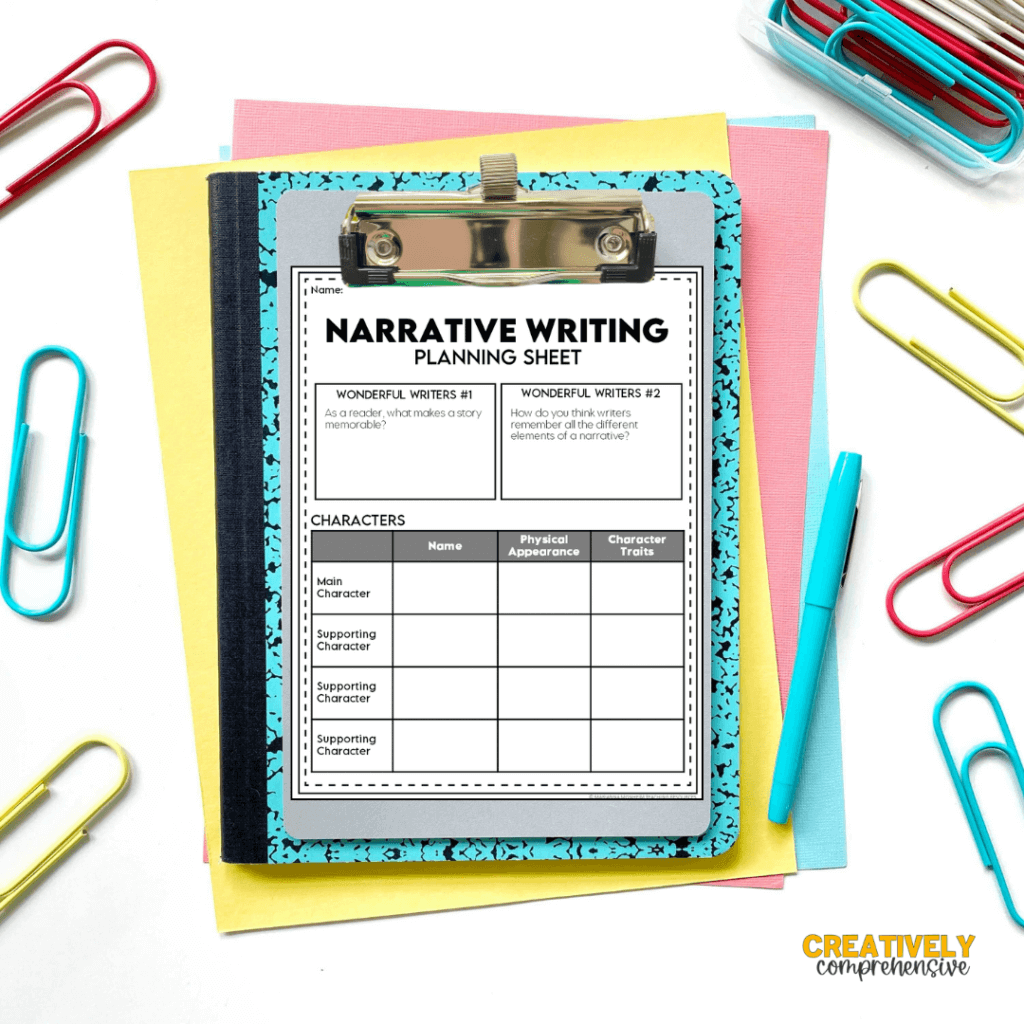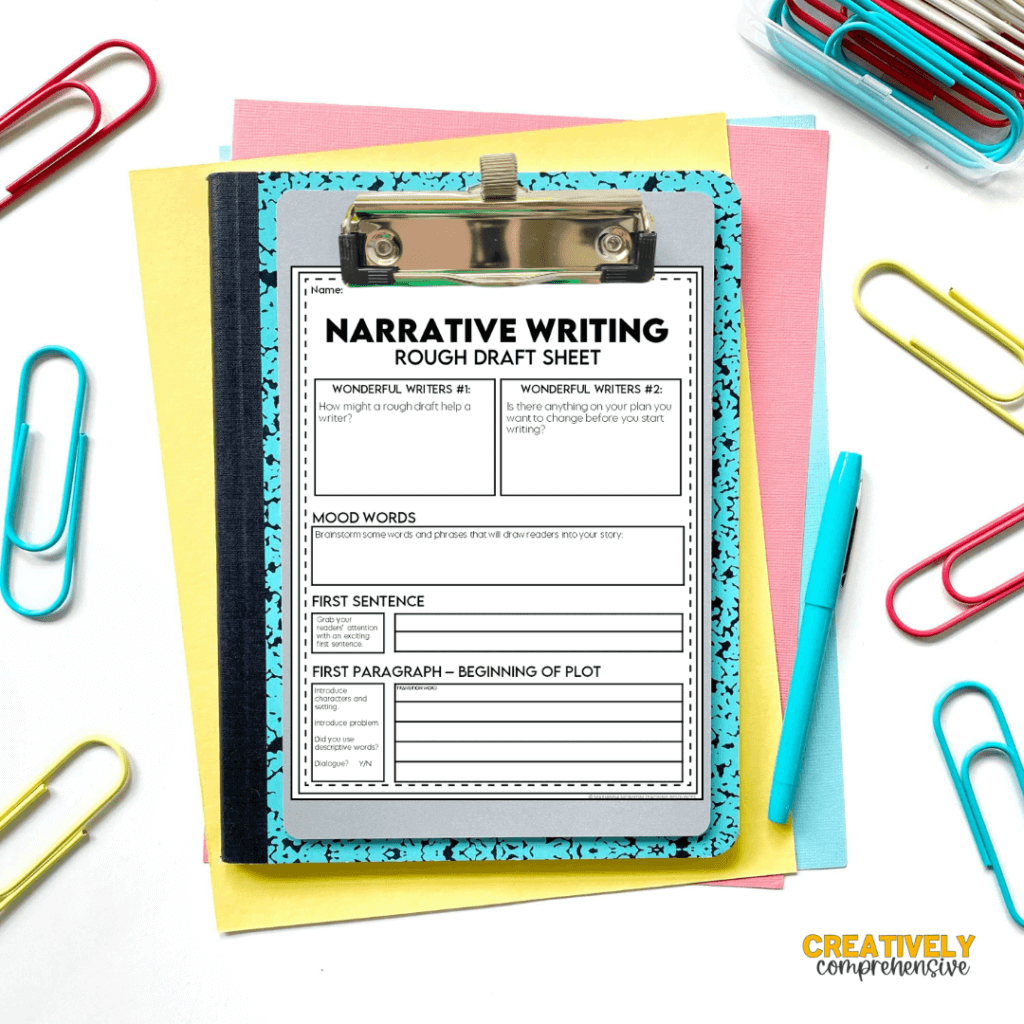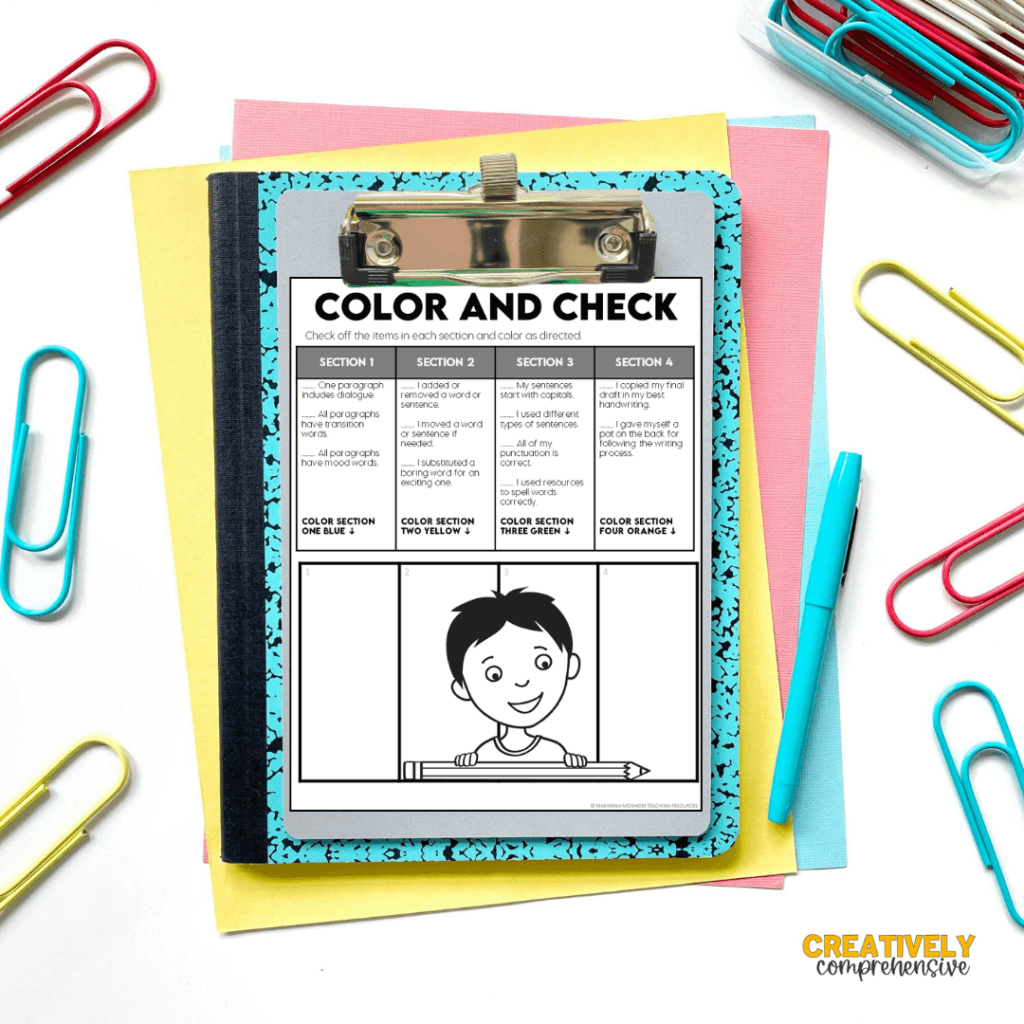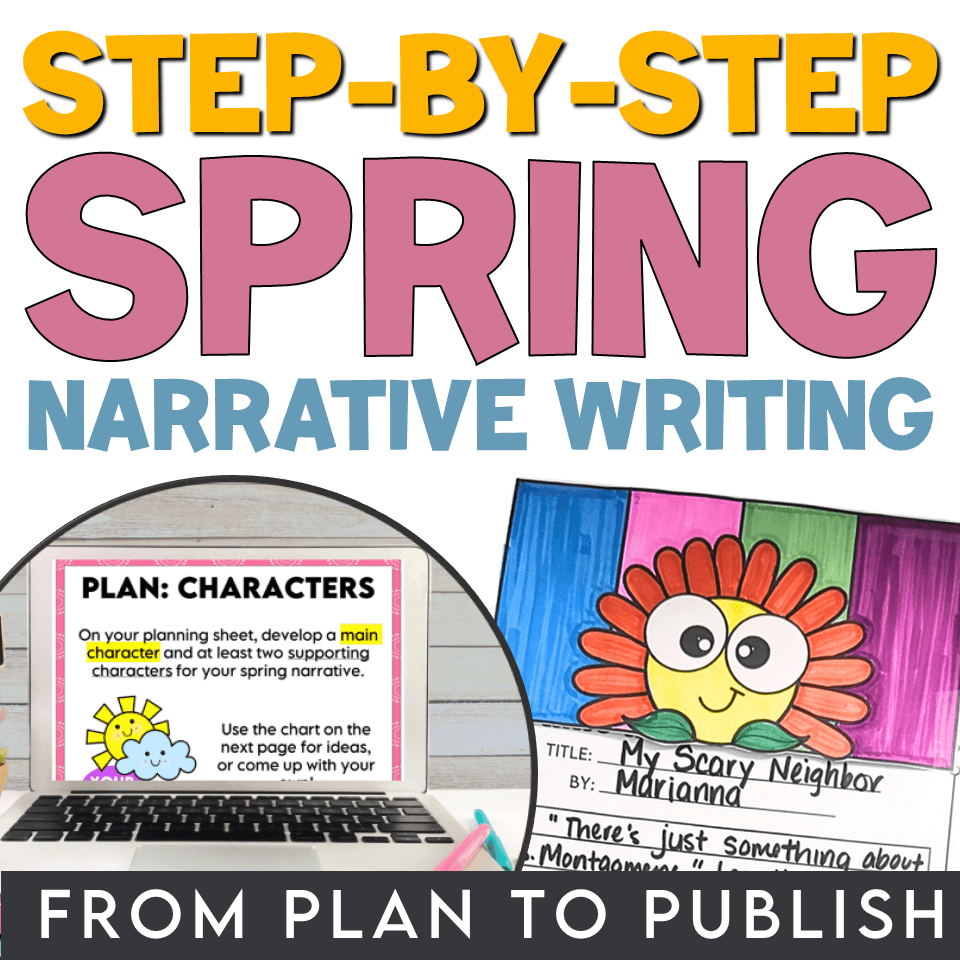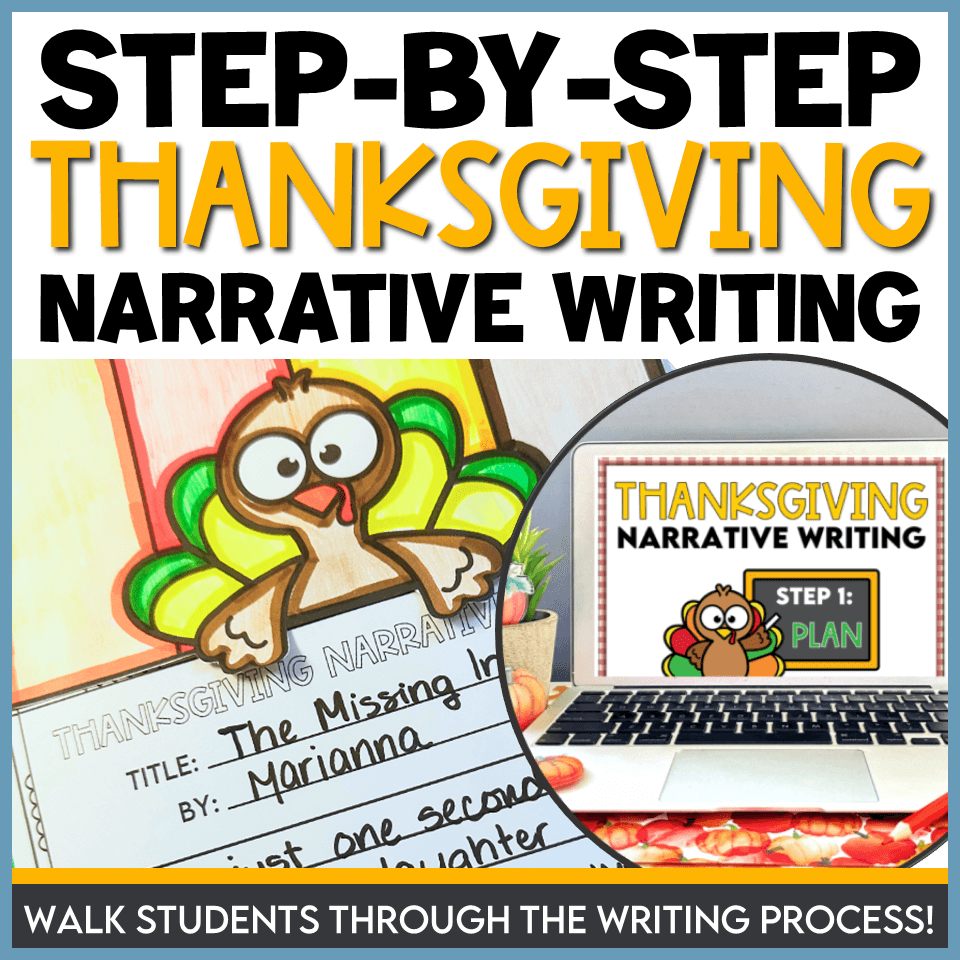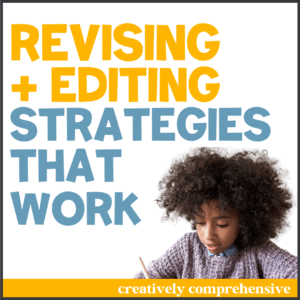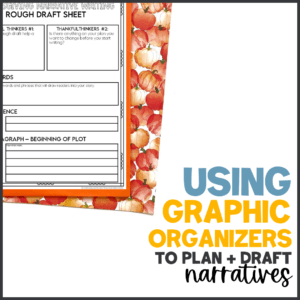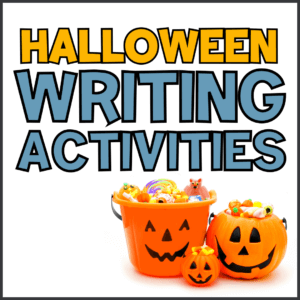By Marianna Monheim – Updated October 25, 2004
How to Write a Narrative Step by Step: A Guide for Teachers
Most students struggle with writing their first and last names at the top of their papers, let alone a full narrative! Teaching narrative writing can definitely be an uphill battle for upper elementary teachers. Just think about it: writing a narrative involves understanding a few fundamental elements: creating characters, developing a setting, building a plot, and ensuring each part flows logically into the next.
What’s a frustrated upper elementary teacher to do? Break it down! The key is to break narrative writing into simple steps that students can follow easily. This approach ensures students can develop their storytelling skills effectively and independently.
Whether you’re introducing narrative writing to your class for the first time or looking for a way to help students deepen their skills, this step-by-step guide will support you in teaching students how to approach narrative writing with confidence.
Want all the steps in a done-for-you format, including a teacher script AND PowerPoint lessons? Click the button below:
Table of Contents
The Essentials of Narrative Writing
At its heart, narrative writing is about storytelling. But what makes a story memorable and engaging? It’s the structure, the characters, the plot twists, and the vivid settings that transport readers into the narrative world. Many students struggle with these elements due to a lack of foundational knowledge in narrative structure. This step-by-step guide breaks down each essential component, helping students navigate through planning, drafting, revising, editing, and publishing their work.
Understanding Narrative Structure for Young Writers
How many stories about “A Day at the Beach” have you read that end with, “…and then we went home and had dinner“? For the most part, upper elementary students are just trying their best to fill up the page, which results in narratives with little to no structure.
By bringing that instruction to students in a scaffolded format, you can help your students develop the skills that lead to cohesive and meaningful stories, guiding them through the process all the way.
Planning a Narrative: Setting the Foundation
Effective planning is the first step in crafting a compelling narrative. This stage involves understanding the three main components of the story’s foundation: character development, setting, and plot. By focusing on each of these elements individually, students can begin to piece together a story that feels complete and engaging.
1. Character Development
Jim is nice.
Dana is nice.
Mrs. Rogers is nice.
One of the best shifts I’ve made when teaching narrative writing is having students create fully developed characters BEFORE writing one word of their story. Encouraging students to think about their characters’ personalities, motivations, and backgrounds helps them create multi-dimensional characters.
On our planning sheets, students dig deep into their main and secondary characters, considering not just what they look like, but their inner character traints. They then use HOW these characters would react to certain situations to drive their stories.
2. Creating a Vivid Setting
The setting brings the story to life and anchors it in a specific place and time. It’s important for students to think about these questions as they are planning their narrative writing piece:
- Where does the story take place?
- What details can help readers visualize this setting?
- How does the setting impact the character’s actions?
3. Building a Logical Plot
Don’t let students develop their plot as they’re writing! A strong plot is essential for an engaging story. A graphic organizer is an essential tool at this phase of the planning process!
As students are learning the ins and outs of narrative writing, keep things simple. Use the following questions to help them develop a plot they can easily follow while they write:
- Beginning: What event sets the story in motion?
- Middle: What obstacles does the character encounter?
- End: How is the main conflict resolved?
Drafting the Narrative: Bringing Ideas to Life
Using Dialogue and Transitions Effectively
Adding dialogue can help bring characters to life and make the story more engaging. At the same time, transitions are crucial for guiding readers smoothly through different parts of the narrative.
Your students will most likely need the most scaffolding when it comes to adding dialogue to their narratives. I suggest keeping it simple by having them plan one dialogue exchange in one paragraph of their narrative. This way, you won’t have to read papers filled with excessive quotation marks!
Creating Mood Through Word Choice
Helping students understand how mood words affect the reader’s experience is another key component of this step. Choosing descriptive and emotive words can make a story more immersive. Encourage students to select words that evoke emotions in their readers to make their story resonate.
Revising and Editing: Refining the Story
“I’m done writing!”
It’s very important for students to have an understanding of the complete narrative writing process BEFORE they begin their piece. Otherwise, revising and editing are going to be hard sells for most of your class!
Want to make this part of the process more palatable? Try a rubric disguised as a coloring activity. Students will check their work for one specific element at a time. As they check off each element, they get to color a piece of their story topper. Not only will this entice them into actually revising and editing their writing, you can get a head start on grading because students will have fixed many common errors on their own.
Publishing the Narrative: Sharing the Finished Work
This last step of the process is crucial, because it reminds students to write clearly, because the purpose of writing anything is for other people to read it.
That being said, published narratives can look different for different groups of students. You might have a class that wants to type out their work and make it presentable. Or you may be trying to head off a mutiny after making them revise and edit. Let publishing take the shape you need it to, but I urge you not to skip this step!
Benefits of a Step-by-Step Approach for Narrative Writing
Following a step-by-step process for narrative writing empowers students to develop each story element thoroughly and clearly. Scaffolded lessons, such as the PowerPoint lessons provided in my narrative resources, ensure that each part of the narrative process receives focused attention, making it easier for students to grasp complex concepts.
Let me help you teach narrative writing this year with these done-for-you scaffolded narrative units. Each one contains:
- Planning Lesson: Guides students through character, setting, and plot development.
- Drafting Lesson: Teaches students how to integrate transitions, dialogue, and mood.
- Publishing Lesson: Walks students through revising, editing, and finalizing their narrative.
Not to mention, all lessons include graphic organizers that will help students stay on track and the “Color and Check” Rubric that encourages students to revise and edit!
To learn more, click on the images of any of the resources below:

